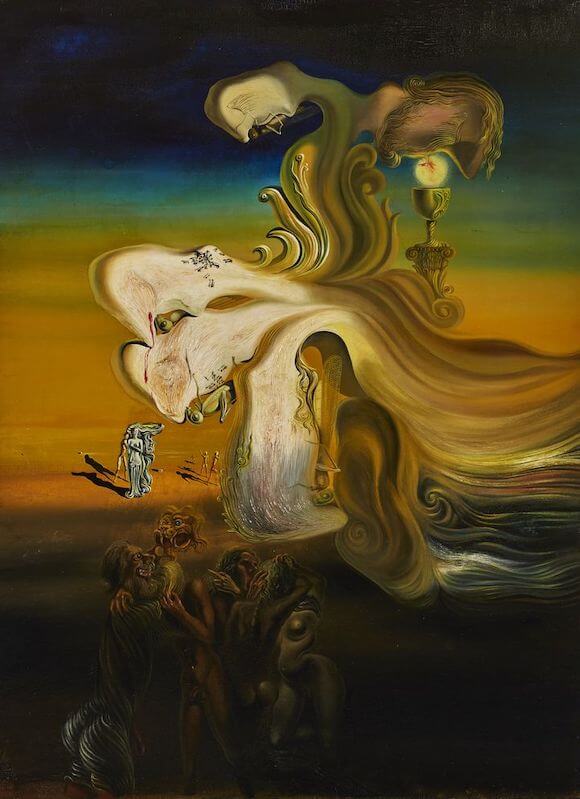Profanation of the Host, 1931 by Salvador Dali

Profanation of the Host belongs to a series of paintings executed in 1929-30 in which Dali explores the theme of onanism, guilt, and paternal retribution. The self-portrait head of The Great Masturbator, which first appeared in an eponymous work of 1929, is repeated a few times in the painting in the form of organic extremities that appear to burst forth from the extravagant object/monument in the center of the composition. Grasshoppers, which Dali associated with abjection and horror, are strategically appended to the central structure and to the faces of three of the masturbators. The fourth masturbator, distinguished by flowing locks of blond hair and a copious beard that repeats the organic rhythm of the swirling forms below, ironically bows its head before the image of a luminous host rising from a chalice. Blood-stained semen drips from the mouth of the masturbator into the chalice. To the left of the central monument are several nude figures of both sexes and a semiclothed woman with flowing blond hair and a long robe. Beneath her, an entangled mass of five virtually indistinguishable male and female bodies dissolves into the shadows. Crowning the scene is a lion's head that bears a certain resemblance to the grotesque, bearded figure at the far left of the group.
Critics has long associated the organic profusion of form in Profanation of the Host and related works The Font with Dali's interest in art nouveau - what he called modern style - architecture. At a time when the rationalist aesthetic of Walter Gropius, Mies van der Rohe, and Le Corbusier had achieved international recognition, Dali characteristically looked elsewhere, turning his attention to the considerably undervalued work of Hector Guimard and Antoni Gaudi.























